Tech How-To****There are few things more frustrating to a rider ready to ride than a motorcycle that won't start. But a silent machine need not stay that way. If an engine has fuel, spark and compression and the timing is reasonably close, it has to run as long as the Earth's atmosphere still contains oxygen. The key is to be methodical and see which parts of the combustion equation are missing in action.****Start with history. When did the engine last run: When I parked it six months ago? Until I turned it off a few minutes ago? Right before I worked on it? Right before I put these trick parts on or right before I crashed? The past will reveal the direction you need to take in the present. Where you start looking after a crash is very different than where you begin with a bike that has been parked for months or years. If you bought a bike that didn't run and you need to read this story, you're an idiot or a compulsive gambler, but maybe you'll get lucky.1. Whether the bike is a two- or four-stroke, it's almost always easiest to check the fuel supply first. If you're pretty sure there's fuel in the tank, don't take off the cap and look in. Remove the fuel line from the petcock and see if fuel flows easily when you turn it on. If the fl ow is slow or stopped, open the cap. If you get fuel with the cap off, there is a problem with the vent in the cap or with the vent hose.2. If no fuel comes out of the petcock but there's gas in the tank, you need to get out the tools. Take off the tank and carefully empty the fuel inside into an approved container. Gasoline is extremely flammable and the fumes are explosive. Make sure you work in a well-ventilated area and away from any source of combustion. When the tank is empty, remove the fuel petcock from the tank.3. An off-road bike will have a long strainer like this one while a motocross bike will have a shorter one. If the petcock is messed up, more than likely you'll see crud on the outside. The screen won't look clean like this. It'll look chalky or like it has jelly on it. If the mess is bad enough, you'll need to replace or rebuild the petcock. Clean the screen and parts with carburetor cleaner.4. If you did have fuel leaving the end of the fuel line, then open the fl oat bowl drain on a fourstroke, or remove the fl oat bowl cap (usually a 14 or 17mm hex on the bottom of the fl oat bowl) on a two- or four-stroke. Turn on the petcock and see if fuel runs out of the overflow lines or out of the fl oat bowl. If the carb is getting fuel, normally you would move on to compression and spark before removing the carb.5. We will assume that you have spark and compression for now and continue following the route of fuel into the engine. Because it's easy right now, check the carburetor vent hoses to make sure they aren't blocked. Check more than the ends and especially on a four-stroke. The hot exhaust pipe can easily melt vent lines shut. If the carb has blocked vents, it won't allow in enough fuel.6. Start by taking the carburetor off the bike and removing the float bowl. The general condition of the bowl may hint at what you'll find. Usually, if you're going to see plugged jets or passageways, you'll see some evidence of gunk, a varnishlike coating or even dry, white powder. Here, the only telltale sign is the yellow (normally white) color to the plastic main jet shroud.7. Remove the actual jets (there are three in this CRF450X carb) and look through them while holding them up to the light. If the jets are clogged or even completely plugged, clean or replace them. In the case of an emission-controlled four-stroke like the 450X, the pilot jet has extremely small openings, and it might be easiest to replace it. Carb cleaner and a tool for cleaning welding tips works well for cleaning jets.8. Look at the float valve next. Get to it by pulling the pin holding the float. The fl oat needle will probably be attached to the float. You can see some gook around the float valve here. Wear eye protection and spray carb cleaner into the fl oat valve opening. In there is a screen that isn't removable on Keihin FCR carburetors, so follow the cleaner with compressed air to clear the opening and screen.9. By now you should be sure the engine is getting fuel. Start checking for spark by removing the spark plug. Inspect the electrode. Is the porcelain cracked or damaged?10. Put the plug back in the cap, then ground the threads of the plug to a metal part of the engine. Note that Alex has the plug touching the bolt for the cam cover. The cover itself has a rubber gasket and is painted, so it wouldn't provide good ground. Kick the engine over or hit the starter button and look for spark. Even in sunlight you should be able to see spark between the tip of the plug and the electrode.11. Check the integrity of every electrical connector on the machine (a dirt bike doesn't have that many). The wires plugged onto this Honda coil are easy to knock loose when removing and replacing the fuel tank. As you inspect connections, look for obvious cuts, tears or burns in the wires between the connections. We've seen very small cuts to wire insulation that have severed the wire inside.12. When there's no spark, a very common culprit is the kill button. It's easy to unplug the kill button from the system. That will usually defeat the kill function. If the button or its wiring is at fault, disconnecting it will generally restore spark. On some models of kill button, parts can easily fall out when the button is off the bar. So if you changed the bar and then the bike wouldn't start, replace the button.13. If you've chased the spark this far and haven't made any progress, hopefully you're still in the garage. You won't be riding today or if you're at the trail, any farther today. A shop manual has procedures to test electrical components like this stator, but the most surefire method is to swap ignition parts with a bike that runs until you do have spark. Most of the time, the stator will be the culprit. This one looks fine but is bad. Stators will often work when cold and go bad when hot, making them difficult to diagnose.14. If you do locate spark and fuel is in all the appropriate places, the problem is mechanical. You can use a compression gauge on an electric-start bike, but it's difficult at best on any kickstart bike. The best option for a four-stroke is a leak-down test. This leak-down tester is from Motion Pro and it will tell you whether the engine is holding pressure and is a great indicator of engine condition.15. If the engine isn't holding pressure for the amount of time specified in the leak-down tester directions, remove the muffler and the airboot. Start the leak-down test again, then listen for air escaping from the exhaust port (bad exhaust valves or seals), carburetor intake (bad intake valves or seals) or along the head-to-cylinder joint (bad head gasket or warped head). A cardboard tube from inside wrapping paper or paper towels can be used like a stethoscope to help locate the compression loss. If it's the rings that are leaking, you will hear air escaping from the crankcase vent hose.At this point you will have exhausted the options open to most home mechanics. Generally you will have located the problem. If you haven't, from here you will need to start looking inside the engine to make sure all is correct. But make sure you have covered all the bases. If you feel that the problem is still something small and external to the engine, you could save in the long run by having a good tech troubleshoot the bike before taking it apart. There is a good chance that a tear-down will obscure what caused the original problem, so make sure that all other avenues are explored first.
Latest

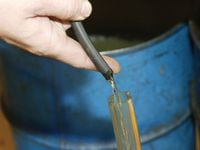
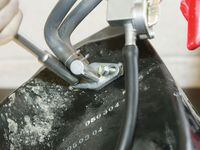
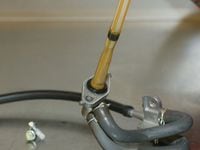
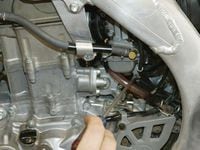
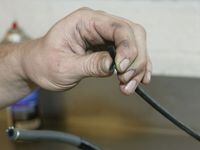
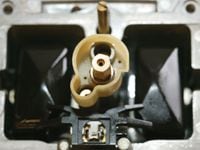
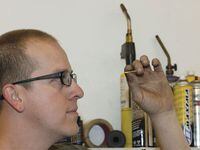
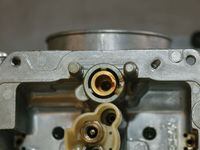
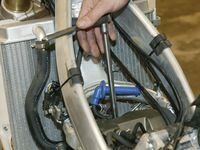
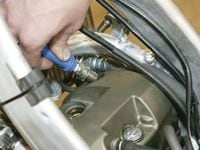
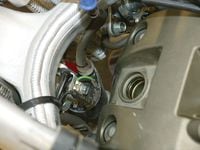
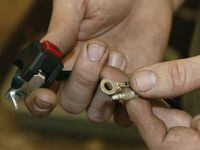
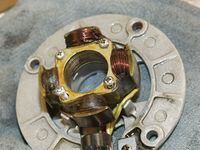
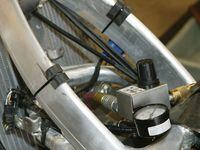
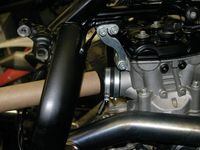
/cloudfront-us-east-1.images.arcpublishing.com/octane/WM3CKNM255E7NLISG3J5SOU63Y.jpg)
/cloudfront-us-east-1.images.arcpublishing.com/octane/XP5WDDR2AVGR3BF5S6TPCGYJ5A.jpg)
/cloudfront-us-east-1.images.arcpublishing.com/octane/7UAIG5GYLZH7LD72MKUYIHQYWU.jpg)
/cloudfront-us-east-1.images.arcpublishing.com/octane/6KXNSCIBK5BUNIJXUUELRO5W5Q.jpg)
/cloudfront-us-east-1.images.arcpublishing.com/octane/ZEQ7DSS7ZJCSLDAPECTSOAOGXI.jpg)
/cloudfront-us-east-1.images.arcpublishing.com/octane/OFSXJJ5PZFEZ5D5ZPMCFVHJUMA.jpg)
/cloudfront-us-east-1.images.arcpublishing.com/octane/N2JLNLG44VEKBMEPORRDTMX5A4.jpg)
/cloudfront-us-east-1.images.arcpublishing.com/octane/EOERU244ONEWVKQ7C24OHMRVWY.jpg)
/cloudfront-us-east-1.images.arcpublishing.com/octane/JF4T3ULTGNHTVEKSTNKLJ2IGKY.jpg)

/cloudfront-us-east-1.images.arcpublishing.com/octane/FAOZEEEXFVA3ZK2PYMY3DHI2EQ.jpg)
/cloudfront-us-east-1.images.arcpublishing.com/octane/WCAUGYKA5FDZTB64FM36LJFMMM.jpg)
/cloudfront-us-east-1.images.arcpublishing.com/octane/EIDVOIN5IJDMRIVS2VNTOOBVSA.jpg)
/cloudfront-us-east-1.images.arcpublishing.com/octane/5BSWCTPONFB3DJFRPJ34STZMR4.jpg)
/cloudfront-us-east-1.images.arcpublishing.com/octane/KSERUHQUTNHLBCWKXS2R3TYZHI.jpg)
/cloudfront-us-east-1.images.arcpublishing.com/octane/GGOH2AQRSVHY5C5JLNEVYLB5SU.jpg)
/cloudfront-us-east-1.images.arcpublishing.com/octane/TJJEHV3ATZFFXHUYZABHXKE2DI.jpg)
/cloudfront-us-east-1.images.arcpublishing.com/octane/M7L5LNQ5JZENHNBTCHEIKZKD24.jpg)
/cloudfront-us-east-1.images.arcpublishing.com/octane/WIC4RXQ36BAXNIW6U4UJ3XDLKI.jpg)
/cloudfront-us-east-1.images.arcpublishing.com/octane/G64JLSXQBJFMVPTETPM4H353EU.jpg)
/cloudfront-us-east-1.images.arcpublishing.com/octane/ZBMLCCOSNJBIVAEC2OU6YSONKY.jpg)
/cloudfront-us-east-1.images.arcpublishing.com/octane/U7PDRXGEI5DCFJGSVGNLAHGIMA.jpg)
/cloudfront-us-east-1.images.arcpublishing.com/octane/S553MV5QAJFOHGOKYO7TJ6NGYA.jpg)
/cloudfront-us-east-1.images.arcpublishing.com/octane/62WLA7IMLVF2LIPTA4DGILHZIM.jpg)